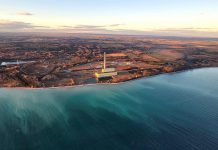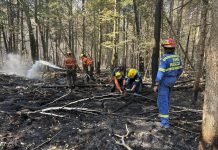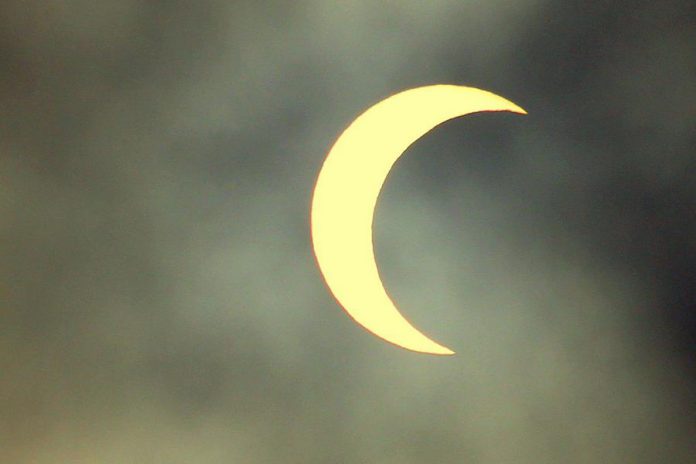
Unless you’ve been living in a cave for the past month, you probably know there’s going to be a solar eclipse on Monday, August 21st. While there’s been a lot of media hype about it, there’s not been a lot of information about what to expect if you live in the Kawarthas.
This is the first total solar eclipse in North America in decades. Beginning at 9:05 a.m. Pacific Daylight Time on Monday, the moon’s shadow will sweep across a narrow band of the continental United States from Oregon to South Carolina at more than 3,000 kilometres per hour.
This is the so-called “path of totality”, where the moon’s dark inner shadow (called the umbra) will completely block out the sun for about 12 million Americans who live directly along the path.
Partial Solar Eclipse in the Kawarthas

For Americans and Canadians who don’t live on the path of totality, we’ll get a partial solar eclipse instead, caused when the moon’s faint outer shadow (called the penumbra) strikes Earth.
In the Kawarthas, the amount of the sun blocked by the moon will vary depending on where you live, from around 66% in Haliburton to around 68% in Peterborough and Cobourg. The partial solar eclipse begins at 1:12 p.m. and will last for around two hours and 35 minutes (slightly longer or shorter depending on where you live), ending at 3:49 p.m.
So what will be the effect of the partial solar eclipse in the Kawarthas? Will it get darker outside and will the sun get dimmer?
Not with a partial solar eclipse. In fact, if you didn’t know the eclipse was happening, you might not even notice it.
You might expect that, with almost 70% of the sun blocked by the moon, that the sky will get visibly darker, like dusk or twilight. However, that won’t happen because the sun remains extremely bright despite being partially obscured by the moon.
Even if the sun is 99% blocked by the moon, it is still 10,000 times brighter than it would be in totality. With over 30% of the sun remaining visible in the Kawarthas, that’s more than bright enough to overcome the effect of the moon.

During the eclipse on August 21st, you may be tempted to glance up at the sun to look for the moon — don’t. The sun won’t get darker during the eclipse so you won’t actually be able to see the moon with your bare eyes, but you will damage them.
It’s as unsafe to look directly at the sun during an eclipse as it is at other times. Without proper protective eyewear, the sun’s rays will burn your retinas — even if you only look for a second or two. Sunglasses are not adequate protection; you need special eclipse glasses that block out 99.9999% of the sunlight (you can also use No. 14 welders glasses if you have them).
If you do have eclipse glasses, be very careful if you ordered them online; some fake glasses sold by scammers have been reported (look for the ISO 12312-2 international safety standard mark).
If you don’t have eclipse glasses, you can make your own pinhole projector using common household materials like a cereal box (see video below). A pinhole projector allows you to see the moon obscuring the sun without having to look at it.
VIDEO: How to Make a Pinhole Projector to View the Solar Eclipse
If you have children, make sure you warn them it is never safe to look directly at the sun, whether there’s an eclipse or not. Don’t allow them to view the eclipse except when using protective eyewear or with a pinhole projector, while being supervised by an adult. Otherwise, keep them indoors.
If you live in Peterborough, another option is to head to Armour Hill, where members of the Peterborough Astronomical Association will have specialized equipment available for viewing the eclipse. Weather permitting, of course (as of August 20th, the weather forecast for Monday afternoon is for increasing cloudiness).
When safely viewing the eclipse using protective eyewear or with a pinhole projector, you’ll see the sun resemble a crescent moon at the peak of the eclipse.
Total Solar Eclipse in the U.S.
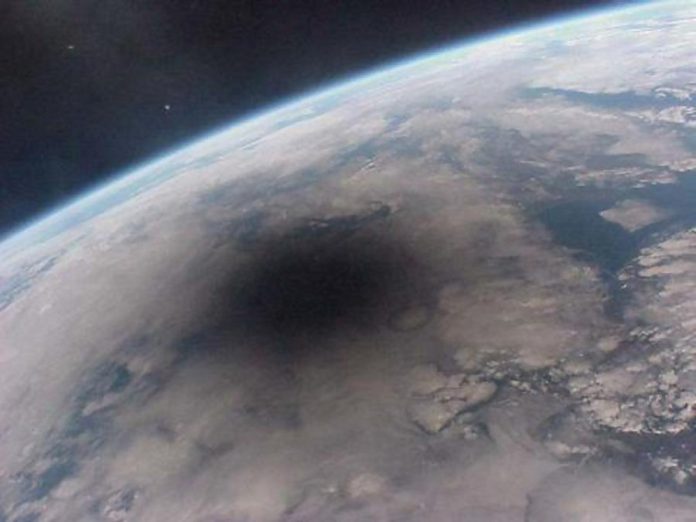
Viewing the eclipse is a different case for people on the path of totality in the U.S., who can look safely at the sun for a period of two minutes and 40 seconds when it is completely obscured by the moon’s shadow. They also have to use protective eyewear at other times during the eclipse; it’s only during totality when it’s safe to look at the sun with bare eyes.
For those lucky people, totality will be a once-in-a-lifetime experience: the sky will darken to night-like levels, the temperature will drop, and birds get confused. People will be able to see the sun’s ghostly corona, as well as bright planets and stars.
Bob McDonald, host of CBC Radio’s science show Quirks & Quarks, is going to be in Casper in Wyoming, which sits on the path of totality, for Monday’s total solar eclipse. He has already seen five total eclipses and describes the experience:
“It’s a whole environmental change,” he says. “Everything changes. As the last bit of sunlight is covered up by the moon, the light goes down just like the dimmers in a theatre — it drops that fast. Suddenly it’s getting dark, but it’s not night dark; it’s kind of a cobalt blue sky and you’re in this weird darkness. As you look around the horizon, there’s a gold sunset glow all the way around you because you’re in a cone and you’re looking out of it.
“The temperature drops, you go from a hot day to really nice and comfortable. And in addition to the sun itself, this time there are going to be four planets visible and they are going to be like diamonds on either side of the sun, so it will be sort of a necklace in the sky. It’s really hard to describe unless you’ve seen it. If you haven’t seen a total eclipse, you haven’t seen an eclipse.
“People go crazy. It’s very emotional. Everyone just starts screaming and yelling ‘Oh my god, I can’t believe it’s happening!’ And that’s also part of it. This is a natural event that you cannot stop. We cannot control it. Once again nature just comes along and says you don’t matter to me, I’m just going to do this anyway. You feel humbled by that.”
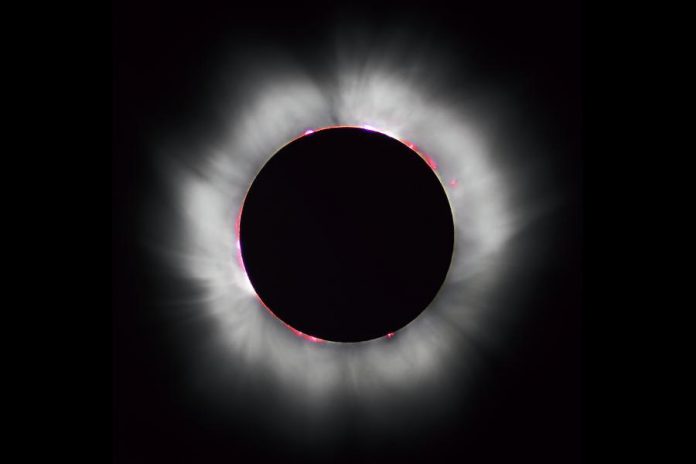
If you’re thinking of making a last-minute trip to the U.S. to get in the path of totality, you may want to reconsider. There are 200 million people who live within a day’s driving distance of the path of totality and an estimated 20 million people are already planning to make the trip. Traffic is expected to be heavily congested both travelling to and from these areas.
If you can’t travel to the path of totality in the U.S., don’t have protective eyewear to safely view the partial solar eclipse here in the Kawarthas, or if it’s cloudy, you can always experience the total solar eclipse online.
NASA is making live streams available on Facebook, YouTube, Twitter/Periscope, Twitch TV, and Ustream.
Or just view it here:
For more information on the eclipse, visit NASA’s comprehensive website at eclipse2017.nasa.gov.
The next total solar eclipse in North America will take place on Monday, April 8, 2024. This will be an exciting moment for Ontario residents, as the path of totality for that eclipse will pass right over Lake Ontario.




